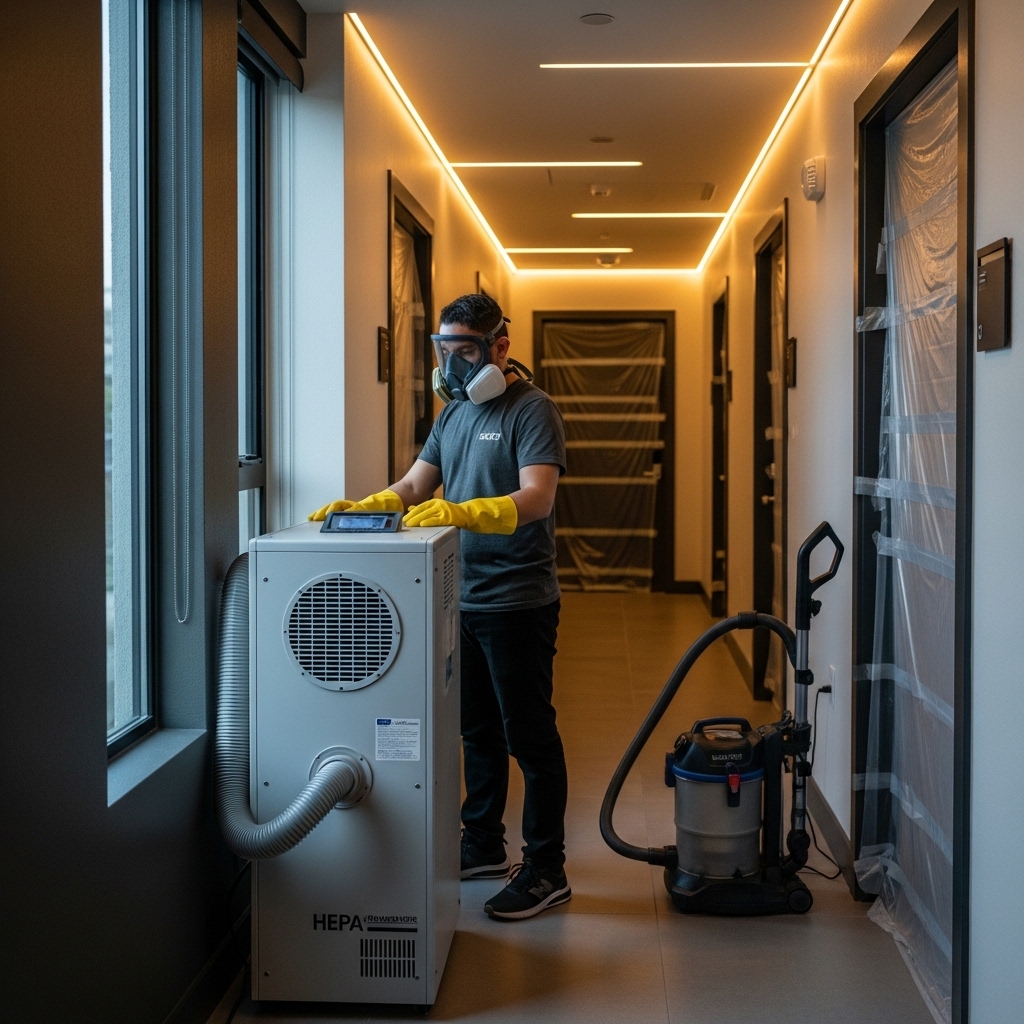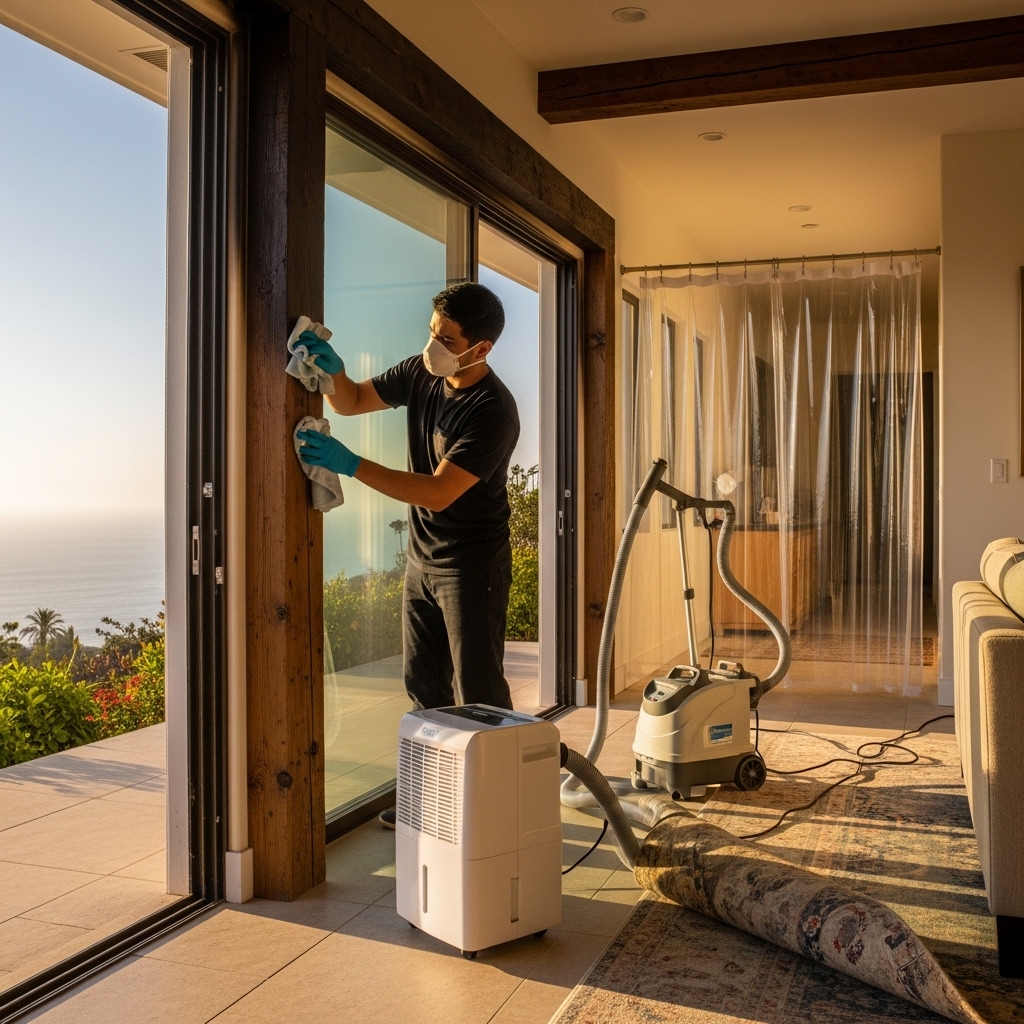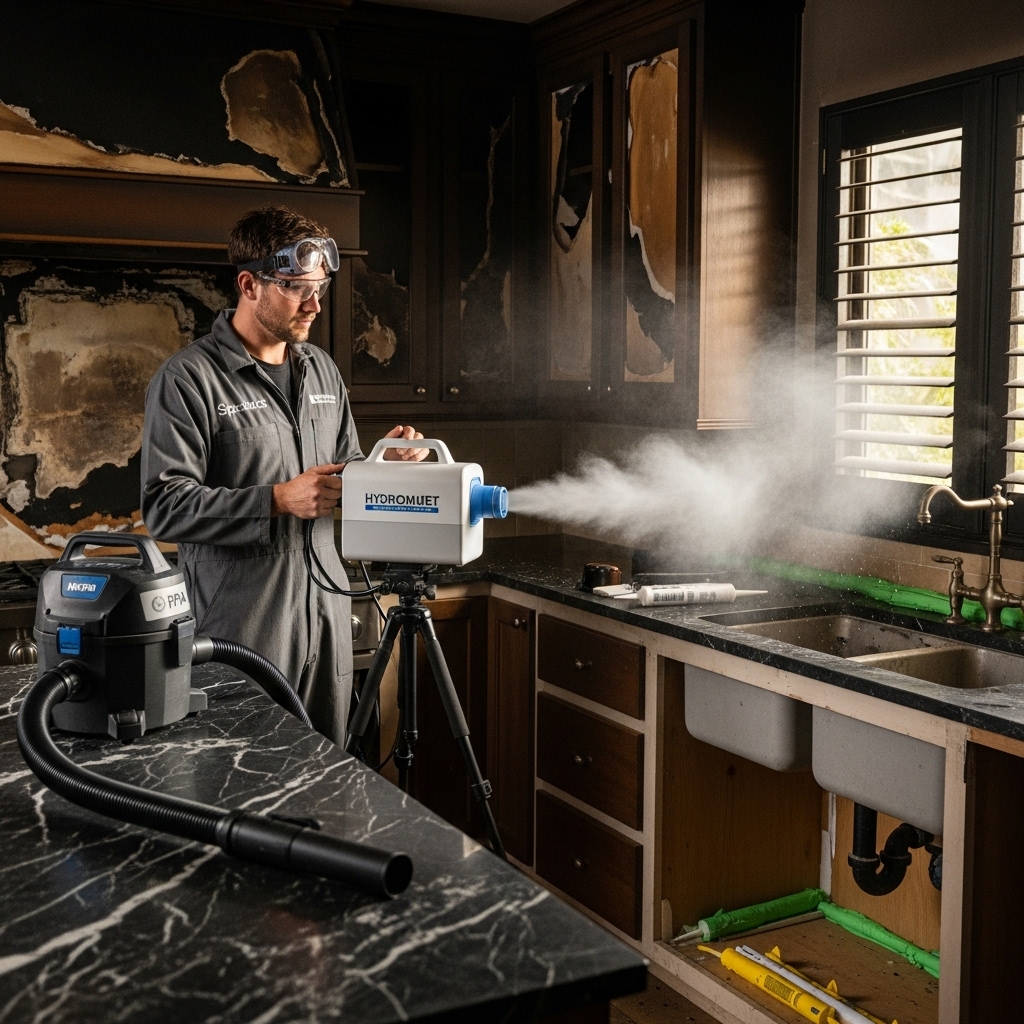Introduction
Apartment smoke damage brings unique challenges: shared walls and vents, common corridors, and coordination with property managers and neighbors. In Canoga Park, California, where seasonal winds can carry particulates into multi-unit buildings, a smart plan protects your health, limits cross-contamination, and speeds your return to normal life. This guide offers practical, apartment-focused tips for assessment, cleaning, odor removal, and communication. If the situation feels bigger than a DIY project, or if building systems complicate the job, consider calling pros who specialize in smoke damage restoration for multifamily properties in the San Fernando Valley.
Even light smoke can travel far through hallways, elevator shafts, and under doors. Residues settle on ceilings, inside cabinets, and within HVAC closets. To keep soot from spreading to unaffected units or returning after cleanup, start with containment, ventilation strategy, and clear communication with your property manager or HOA.
Safety, Access, and Communication
Before cleaning, confirm the apartment is structurally safe and approved for re-entry. Ask management about building-wide ventilation status and whether fans, make-up air, or hallway pressurization systems are operating. Inform adjacent neighbors if you will be ventilating, and choose an exhaust route that does not blow soot toward other units or pool areas.
- Wear gloves, eye protection, and a P100 respirator in heavily affected rooms.
- Keep pets in a clean space or with a friend to avoid exposure and tracking soot.
- Coordinate elevator use and staging areas for bagged debris to avoid mess in common spaces.
Containment and Ventilation in Multifamily Settings
Because apartments share air pathways, create tight containment. Close doors to unaffected rooms, place towels or door sweeps at thresholds, and tape plastic over laundry closets, return grills, and pass-through openings until inspected. Ventilate by exhausting air out a window using a fan; avoid drawing hallway air into your apartment to prevent recontamination. Shut down your HVAC until filters are replaced and the system is inspected.
Assessment and Documentation for Renters
Apartment dwellers often juggle two records: personal contents and the building’s structural elements. Photograph everything—walls, ceilings, appliances, and personal items—and send a summary to your property manager promptly. Request clarity on what the management will address (e.g., duct cleaning, repainting, insulation, corridor cleanup) and what is your responsibility (e.g., personal property cleaning). Keep receipts for supplies and laundry services.
Dry Cleaning First
Start with HEPA vacuuming using a brushless tool, hovering above surfaces to avoid grinding soot. Follow with dry cleaning sponges on walls, doors, trim, and inside cabinets. Replace sponges as they darken. Working from top to bottom and from cleaner rooms to dirtier rooms will reduce cross-contamination. Bag used sponges and disposable wipes for proper disposal.
Targeted Wet Cleaning
After the first layer is gone, move to wet cleaning with mild detergents and, if necessary, restoration-grade degreasers. Work in small sections, rinse thoroughly, and dry quickly. Pay attention to light fixtures, door hardware, and window tracks where soot accumulates. Kitchens and bathrooms typically need repeated passes due to condensation patterns that attract residues.
Textiles and Small Spaces
Apartments often rely on textiles—rugs, curtains, pillows—to soften acoustics and add privacy. These items are odor sponges. Sort fabrics by washing instructions; run test loads with odor-neutralizing additives. For delicate items, use a restoration-savvy dry cleaner. Bag cleaned textiles until deodorization is complete so they do not reabsorb odors from the room.
Neighbor-Friendly Odor Control
Deodorize thoughtfully in multi-unit environments. Use targeted surface deodorizers after cleaning and consider low-odor, professional methods like hydroxyl generation under supervision. Be mindful that ozone should be used only by trained professionals with clear re-entry protocols and coordination with building management. If odors persist mid-project, re-check hidden cavities, behind toe-kicks, and inside exhaust chases—and consider professional smoke damage restoration to address sources beyond your unit.
HVAC, PTACs, and Shared Systems
Apartment HVAC varies. Some units have individual systems; others share ductwork or use PTACs. Replace filters immediately and again after major cleaning stages. Vacuum supply and return grills, wash removable covers, and inspect coils if accessible. If you suspect corridor or rooftop systems are contaminated, request that property management schedule professional duct and unit cleaning for common equipment.
Cabinets, Closets, and Storage Nooks
Cabinets, closets, and built-ins can harbor concentrated odors. Remove contents, HEPA vacuum interior surfaces, and clean with mild detergent. For raw particleboard shelves, minimize moisture and consider sealing after cleaning with an appropriate odor-blocking primer if management approves repainting. Use breathable bins for cleaned items until rooms test odor-free to your senses.
Electronics, Wi-Fi Gear, and Appliances
Unplug electronics exposed to soot and cover them with clean plastic while you work. Do not power on devices until inspected, especially if they were close to heat or visible residue. Clean refrigerator gaskets, microwave vents, and dishwasher filters; protein smoke can hide in these spots and generate lingering odors.
Floors and Small-Footprint Strategies
In compact apartments, floors take a beating and quickly telegraph cleanliness. HEPA vacuum carpets thoroughly before any wet extraction. For hard floors, use minimal water, frequent cloth changes, and quick drying. Pay attention to baseboards and door casings, which often show gray smudging after an event.
Waste Handling and Building Etiquette
Seal debris in sturdy bags, wipe the outside of each bag, and plan disposal during low-traffic times. Wipe elevator rails and door frames after transport. Good building etiquette speeds approvals and encourages management to coordinate broader fixes like hallway cleaning and duct service.
Insurance, Deposits, and Responsibility
Renters insurance typically covers personal property; the landlord or HOA usually handles structural elements. Share documentation early, including before/after photos and a list of items sent for professional cleaning. If you paid a security deposit, keep records showing that smoke damage came from an incident beyond your control and that you performed diligent cleanup.
Common Pitfalls in Apartments
- Ventilating without containment, drawing hallway air and soot back inside.
- Cleaning without replacing filters or checking shared systems.
- Skipping cabinet interiors and closet shelves where odors concentrate.
- Leaving textiles in the unit during deodorization, allowing reabsorption.
- Using strong fragrances instead of true odor counteractants.
Step-by-Step Quick Plan
- Confirm safety and coordinate with management.
- Shut down HVAC, establish exhaust-only ventilation, and set containment.
- Document damage; notify insurance and landlord/HOA.
- HEPA vacuum and use dry sponges on surfaces.
- Wet clean with appropriate solutions; rinse and dry.
- Deodorize combined with continued cleaning; validate progress.
- Address textiles, electronics, and small appliances.
- Replace filters and request building-level checks as needed.
Frequently Asked Questions
Q: What if smoke came from a neighbor’s unit? A: Document the timeline, notify management immediately, and request inspection of shared systems. Your renters insurance may cover your belongings regardless of the source.
Q: Can I handle deodorization myself? A: You can do a lot with thorough cleaning and targeted neutralizers. For heavy cases or shared-system contamination, professional methods may be necessary.
Q: How do I keep odors from coming back after I wash fabrics? A: Store cleaned items in sealed bins or bags until the apartment is fully deodorized and filters replaced.
Q: Are candles and air fresheners helpful? A: They mask odors temporarily and can add new residues. Focus on removal and neutralization instead.
Q: Should I repaint? A: If staining is visible or odors persist from walls and ceilings after cleaning, request permission for odor-blocking primers followed by paint. Management may coordinate this.
Q: What about hallway and elevator smells? A: Ask management to clean common areas and check corridor air handling. Your apartment may be clean, but shared spaces can reintroduce odors.
Get Back to Comfortable Apartment Living
You do not need to tackle apartment smoke damage alone. Smart coordination with management, diligent cleaning, and proven deodorization will restore clean air and peace of mind. When you want fast, apartment-savvy help, reach out for professional smoke damage restoration that respects neighbors, common areas, and the unique needs of multifamily buildings in Canoga Park.


